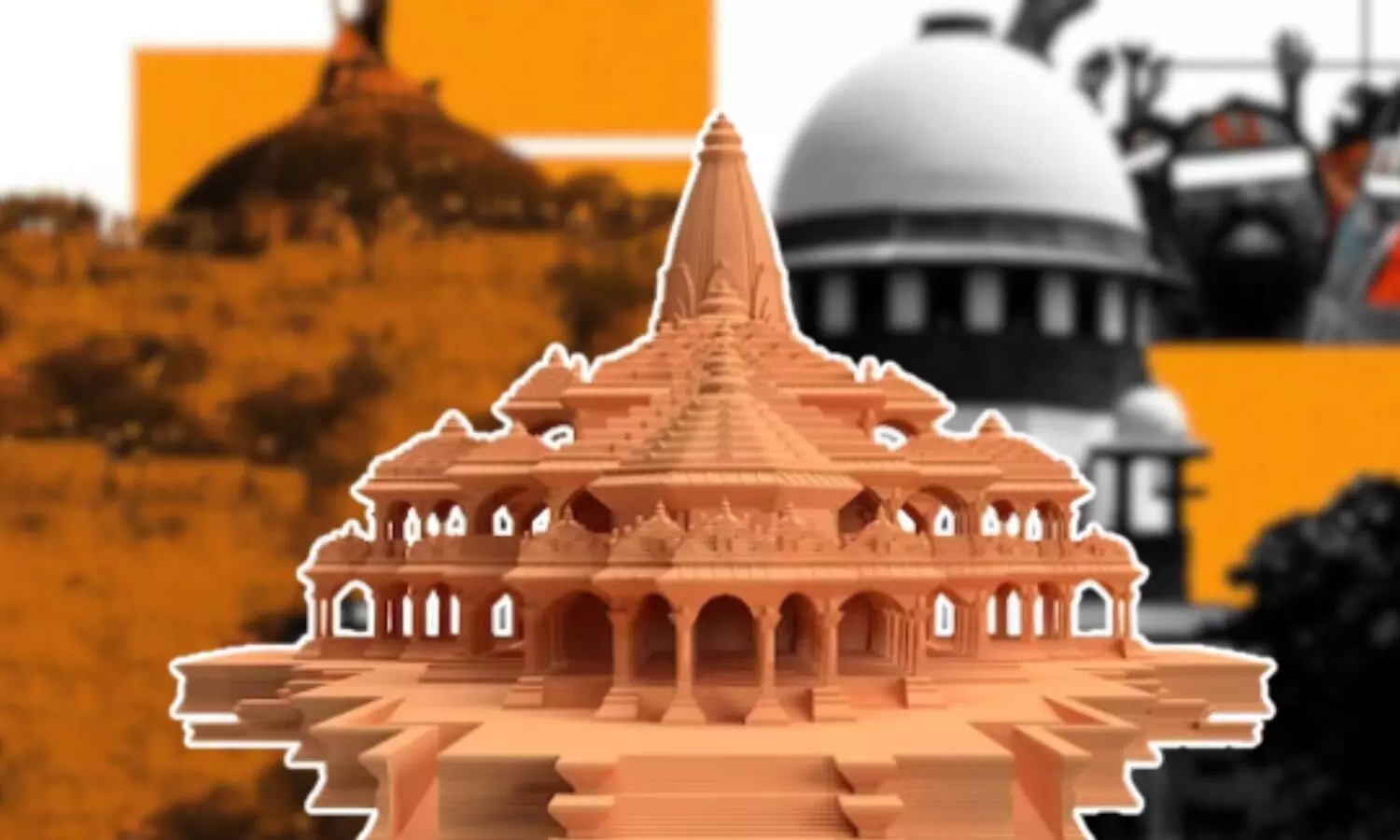The Ayodhya Land Dispute - A Timeline of Events
With the Ram Mandir consecration ceremony held in the Indian city of Ayodhya on January 22, 2024, let's contemplate the significant events leading up to this long-anticipated moment.

With the Ram Mandir consecration ceremony held in the Indian city of Ayodhya on January 22, 2024, let's contemplate the significant events leading up to this long-anticipated moment.
Ram Janmabhoomi – Babri Masjid case or the Ayodhya dispute
Communal violence is no new story, especially when it comes to Hindus and Muslims. The two religions have always been at odds with each other, at times taking a very violent turn. The Ram Janmabhoomi – Babri Masjid case or the Ayodhya dispute is one long-standing example that has been at the core of a lot of communal violence incidents. But what is the dispute about?
The Core Issue
The Ayodhya dispute is essentially a land dispute. The reason it has taken such a serious turn is mainly because of the parties involved. Ayodhya is a city in the district of Faizabad in Uttar Pradesh. Hindus consider the place to be the birthplace of Lord Rama – one of the most revered gods in Hinduism.
They allege that in 1528, Mir Baqi, one of Mughal king Babur’s generals, destroyed the Rama temple and built a mosque called Babri Masjid. The first recorded incidents of violence were in 1853 and the fight has been going on ever since.
Chronology of Events
- In 1859, the British administration constructed a fence, dividing the places of worship. Muslims prayed in the inner court and Hindus in the outer court.
- Suddenly, in 1949, idols of Lord Ram appeared inside the mosque, allegedly by Hindus. Both Muslims and Hindus filed civil suits and the area was locked by the government.
- In 1986, Faizabad District Judge KM Pandey ordered that the gates of the mosque be opened for Hindu worship. In protest, Muslims set up a Babri Mosque Action Committee. Hindus also formed a committee, headed by the Vishwa Hindu Parishad.
- In 1992, a Hindu mob destroyed the mosque. This was followed by nationwide clashes between the Hindus and Muslims. According to reports, more than 2000 people died.
- In January 2002, then Prime Minister Mr. Atal Bihari Vajpayee set up an Ayodhya cell in his office, headed by senior official Shatrughan Singh, to discuss the matter with Hindu and Muslim leaders.
- In February 2002, VHP confirms a deadline of 15 March to begin construction of the Rama Temple on the disputed site, which it had vowed to do earlier. 58 people were reportedly killed in an attack on a train carrying Hindu activists returning from Ayodhya.
- In March 2002, 1000 to 2000 people died in Gujarat following riots after the train attack.
- In April 2002, a hearing begins in Allahabad High Court on the disputed land issue.
- In January 2003, the court orders a survey to determine whether a Ram temple existed underneath the Babri Masjid. In August 2003, archaeologists affirm evidence of a temple beneath the mosque but this is disputed by Muslims.
- In September 2003, 7 Hindu leaders are ordered by a court to stand trial for the destruction of the Babri Mosque.
- In July 2005, Islamic militants allegedly attack the site, blowing a hole in the wall of the complex using explosives. Security forces kill 5 people who they claim were militants and a sixth who wasn’t identified.
- In June 2009, the Liberhan commission – set up 17 years ago – submitted its report on the events leading to the demolition of the mosque. There was a huge uproar when it was published in November 2009 as it blamed leading politicians for the demolition.
- Allahabad High Court, in September 2010, ordered for a split in three parts going to Hindus, Muslims and the Nirmohi Akhara (a Hindu party).
- In May 2011, the Supreme Court stayed the Allahabad High Court verdict calling it “strange” as no party had asked for it.
- In February 2018, the Supreme Court bench, led by the CJI, said that it will treat the dispute merely as a “land issue”.
- In April 2018, the Supreme Court ruled against a plea to immediately refer the case to a larger bench.
Chief Justice Ranjan Gogoi, leading the Supreme Court on November 9, 2019, pronounced their verdict and instructed the transfer of the land to a trust for the construction of a Hindu temple.
On August 5, 2000, the bhoomi puja for the Ram Mandir in Ayodhya took place.
On the occasion of the Ram Mandir Pran Pratishtha (22nd January 2024), Prime Minister Narendra Modi conducted the 'Pran Pratishtha' ritual at the Ram Mandir in Ayodhya.
Ayodhya Dispute Resolution: Supreme Court's 2019 Verdict
On November 9, 2019, the Supreme Court of India delivered its final verdict in the Ayodhya dispute. The court directed the transfer of the disputed 2.77 acres of land to a trust, to be established by the Indian government, for the construction of the Ram Janmabhoomi temple, revered as the birthplace of the Hindu deity Rama. In addition, the court-mandated the government to allocate an alternative 5 acres of land at a different location to the Uttar Pradesh Sunni Central Waqf Board. This allocation was intended for the construction of a mosque, serving as a replacement for the previously demolished Babri Masjid.
Conclusion
The consecration ceremony for the Shri Ram temple in Ayodhya Dham took place on January 22, 2024. Prime Minister Narendra Modi officiated the 'Pran Pratishtha' following the prescribed rituals.
Sources
- All you need to know about the Ayodhya dispute, Available Here
- Timeline: Ayodhya holy site crisis, Available Here
- Krishnadas Rajagopal, Treat Ayodhya case as a ‘land issue’: CJI, Available Here
- Ayodhya dispute: Supreme Court rules against immediate constitution of larger bench to hear case, Available Here

